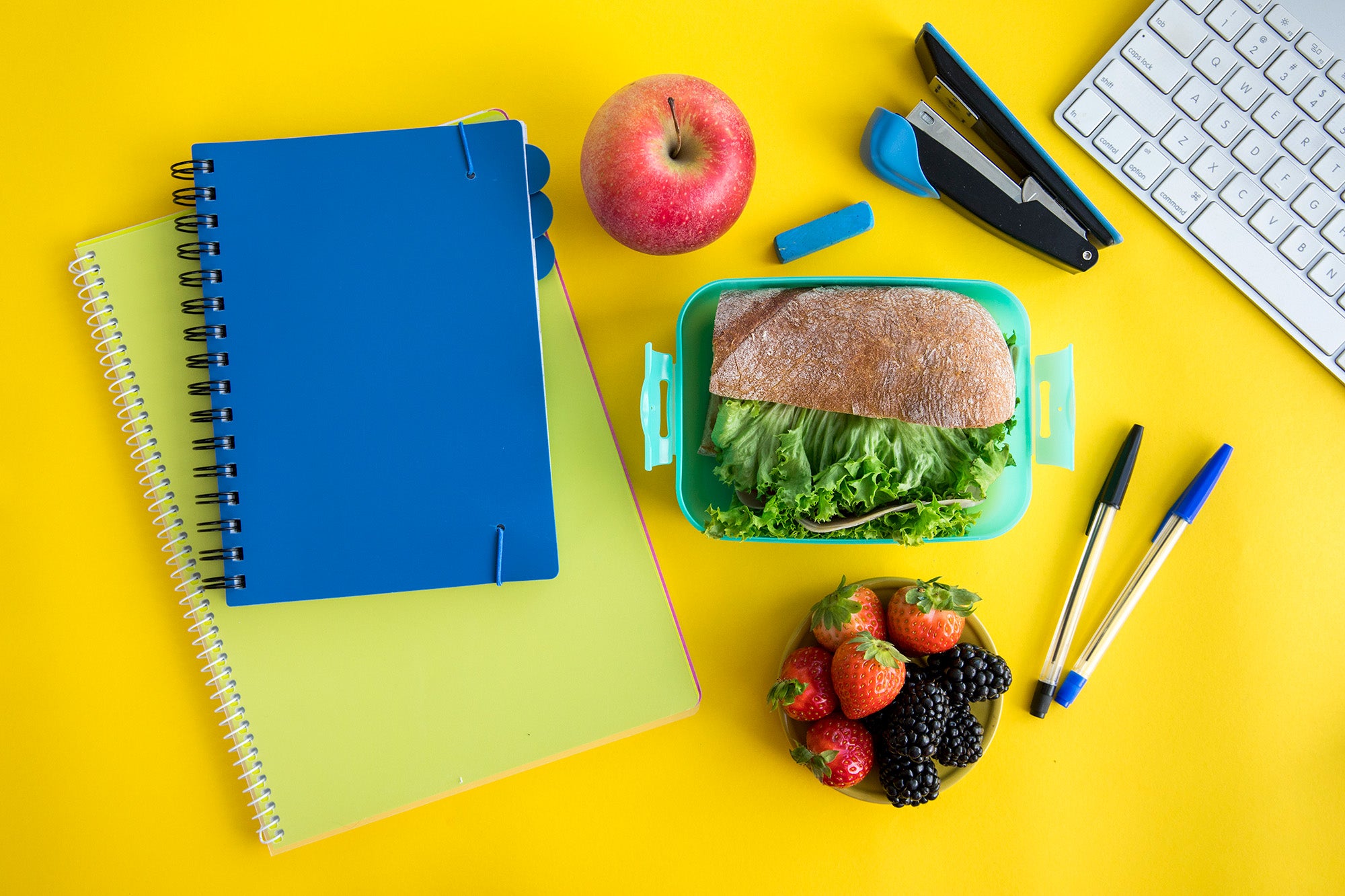

Nutrition Rules Back to School
with Dr. Emily Fritz
Preparing for the hectic back-to-school season is about more than shopping for school supplies and updating wardrobes – although, I must admit that was my favorite part when I was a kid. There’s a lot of prep that goes into readying families for return to school-year schedules, including meal planning. Covering nutritional bases in the classroom and in life is pivotal to starting the school year off right. Data suggests kids between the ages of 5-18 have some of the lowest diet quality scores from the Dietary Guidelines for Americans 2020-2025, so there’s loads of room for improvement [1]. There’s also a lot of science behind proper nutrition for kids - so we’ll dive into ideas that can help you prepare the ultimate back-to-school nutrition routine.
Research continues to highlight the correlation between a child's diet and academic performance, emotional well-being, and physical health. The research shows children who consume a healthy diet, and a balanced breakfast are more likely to have better concentration, memory, and alertness [2-4]. Without balanced nutrition, children may struggle to focus and maintain energy levels throughout the day.
What are the Key Building Blocks of Balanced Nutrition?
Kids should follow some of the same recommendations as adults when it comes to the basic components of a healthy diet. When planning meals, it's crucial to incorporate a variety of nutrients:
Proteins
Critical for growth and cellular repair. Great sources of protein include lean meats, eggs, dairy, and legumes. The current recommendations for protein vary by age. Kids between age 4-13 should get between 19-34 grams of protein per day and for kids aged 14-18 the target is 46-53 grams. Each serving of protein should be around 7 grams. Rivalz Stuffed Snacks contain 8 grams of protein per serving!
Carbohydrates
Carbs are the brain's primary energy source and should be about 45-65% of kids’ total daily calories according to the Dietary Guidelines for Americans or about 225-335 grams of carbs per day. Like adults, it’s important to limit the amount of carbs in the diet coming from added sugar and focus on foods that promote a healthy glycemic response including complex carbohydrates and fiber found in whole grains, fruits, and vegetables. (Check out my blood glucose basics article for more on this topic).
Healthy Fats
Essential for brain health and healthy hormones, fat should make up about 25-35% of children’s diets. Since fat has more calories per gram than carbs or protein, this works out to about 60-80 grams of fat per day with a focus on healthy fats from sources like avocados, nuts, seeds, and fish rich in omega-3 fatty acids.
Vitamins and Minerals
Vitamins and minerals are needed to promote healthy growth, cognitive development and strengthen immunity. Key vitamins and minerals include Vitamin D, Vitamin A, Vitamin C, Folate, Iron and Calcium. Many of these key micronutrients are included in Rivalz Stuffed Snacks and being sure kids eat a mix of fruits and vegetables will help hit these targets.
Beyond the Building Blocks:
Here are a few other science-backed, nutritional opportunities to consider as you start the school year off right.
Do your Best to Eat Meals as a Family
I know how hard this can get, especially with the activities and meetings that also pop up during the school year, but research suggests that families who regularly eat together have better overall diet quality. Family meals offer an opportunity for parents to model healthy eating habits, portion control, and a positive attitude toward food. They also provide a platform to introduce new foods, encouraging a varied diet. The bonus is that family meals can also help contribute to improved communication and stronger family bonds.
Don't Skip Breakfast
Dubbed 'the most important meal of the day', breakfast is especially crucial for school-going kiddos. Breakfast kickstarts the body's metabolism and replenishes the glucose levels necessary for the brain to function correctly. Look for options that have a balanced blood glucose response like whole-grain cereals, oatmeal, eggs, or a smoothie packed with fruits and a scoop of protein powder for a quick yet nutritious start to the day.
Involve Children in Meal Planning and Preparation
Involving kids in meal planning and preparation can make them more interested in what they eat and more likely to eat healthier meals. It’s also a great opportunity to educate them about the nutritional value of different foods and why they are an important part of their diet.
Key Takeaway
Parents hold the power to positively influence and shape kids’ nutritional habits. By offering a balanced and varied diet, limiting sugar, encouraging family meals – including a healthy breakfast – we prepare children for success as they return to school. Also snack smarter by including nutritious snacks like Rivalz, now in single serve bags that are perfect for lunchboxes and backpacks. The back-to-school season is an excellent opportunity to reinforce healthy habits and create a new routine that will provide the foundation for a lifetime of healthy eating.
1. Dietary Guidelines for Americans, 2020-2025, U.S.D.o.A.a.U.S.D.o.H.a.H. Services, Editor. 2020.
2. Hoyland, A., L. Dye, and C.L. Lawton, A systematic review of the effect of breakfast on the cognitive performance of children and adolescents. Nutr Res Rev, 2009. 22(2): p. 220-43.
3. Edefonti, V., et al., The effect of breakfast composition and energy contribution on cognitive and academic performance: a systematic review. Am J Clin Nutr, 2014. 100(2): p. 626-56.
4. Rampersaud, G.C., et al., Breakfast habits, nutritional status, body weight, and academic performance in children and adolescents. J Am Diet Assoc, 2005. 105(5): p. 743-60; quiz 761-2.
This article has been fact-checked by Dr. Emily Fritz. About Dr. Emily Fritz:
Dr. Emily Fritz earned her M.S. and Ph.D. at South Dakota State University in Exercise, Nutrition and Food Science. Emily joins Rivalz from her role as VP of Scientific Affairs at the Beachbody Company and is passionate about advancing scientific discovery for companies leading the way in human health and nutrition. In addition to her commercial work, she has authored, presented, and collaborated on many research studies ranging from large National Institutes of Health (NIH) studies to leading student research projects during her time as an Assistant Professor at Simpson College in Indianola, IA.
